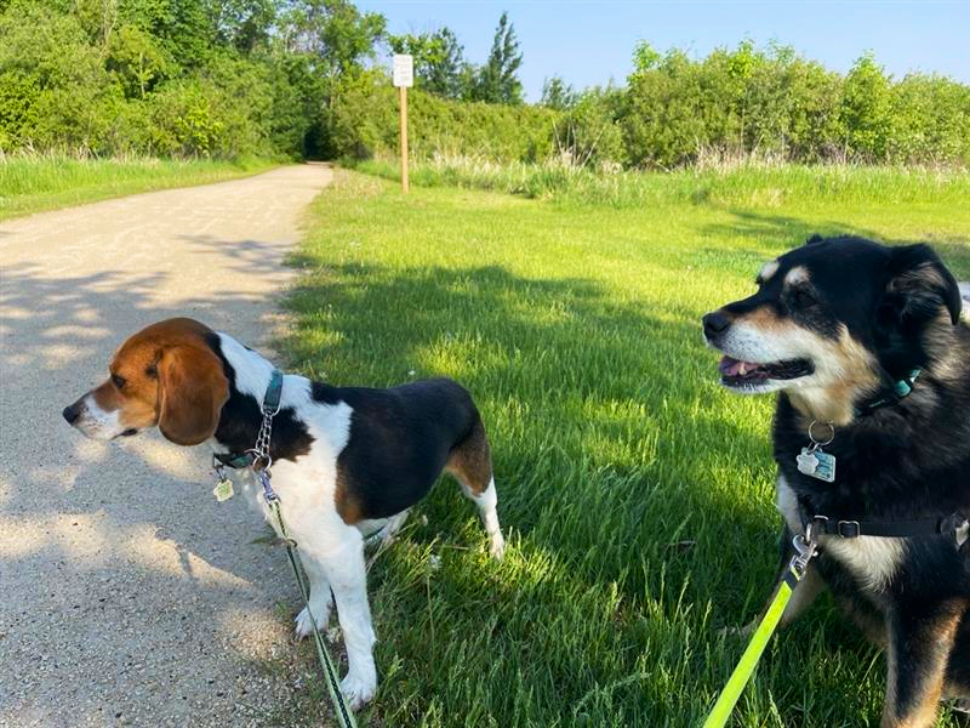In the dog days of summer, it's important to make sure your pooch—and other pets—are kept safe and cool.
Chelsey Westerbeek with LR Horse and Pet, says limiting activity outside on blistering days, and ensuring access to plenty of water are guaranteed a tail-wag.
Preventative tips to beat the heat
"The safest thing is to make sure you have a bottle of water and a dish, or get water bottles that have the dish already," Westerbeek says, noting communal water bowls for pets can spread viruses and other diseases.
She also stresses that furry-friends should never be left in a vehicle, even for a brief amount of time.
"Vehicles can heat up very quickly and, during the summer and especially in direct sun, they turn into a greenhouse...dogs are definitely more sensitive to those temperature changes than we are," Westerbeek says.
Dogs like pugs, frenchies and bulldogs are more susceptible to dangers associated with heat, she notes, due to their scrunched faces.
When it comes to walks, she recommends moving them to earlier and later parts of the day when it's cooler outside.
Warning signs to "paw" attention to
Westerbeek says there are some key red-flags owners should watch out for when it comes to their fur-baby's health.
Excessive panting is one of them.
"Normal panting is how they cool themselves, but when they get too hot and start to overheat, they'll be panting very heavily. And, their tongue and gums will go a really dark red. That's essentially blood coming to the surface to try and cool down," she says.
If your four-legged friend becomes reluctant to do their favourite activities—like chasing a ball, or walking—and just want to lay down, that's also a sign they're getting too hot.
"It is really important to listen to our animals, whether it's a dog, a cat, or horse or whatever. They will tell us what they need," Westerbeek says.
How to cool your critter
Should your fuzzy pal become overheated, Westerbeek suggests some ways to help them cool down.
One way is to wet a bandana or full-body vest and put it on a pet. This helps draw heat away from their bodies, she says.
Giving them some electrolytes can also make a world of difference.
"You can buy electrolytes...but bone broth, goats milk, something like that to help replenish and keep the body doing what it needs to do...is definitely a good idea," Westerbeek says.
A frozen treat is a recommended way to cool an animal down, but she says it's definitely fun.
Working and farm animal safety
Westerbeek says when it comes to working and farm animals, there's a safe balance that needs to be reached.
"It's not fair to a horse to always (have) a nice, cool, comfortable climate and then on show day, or when you hit the rodeo, you're in 30-degree weather," she says. "Horses need to be conditioned to work in this kind of heat."
For cattle, she says heat can translate into a drop in milk production, slower movements, and a reluctance to eat.
Putting a probiotic in their feed can help offset some of the effects of heat stress, she says.
Water and electrolytes also make a big difference in how working animals manage the heat.
Written with files from Carly Koop
